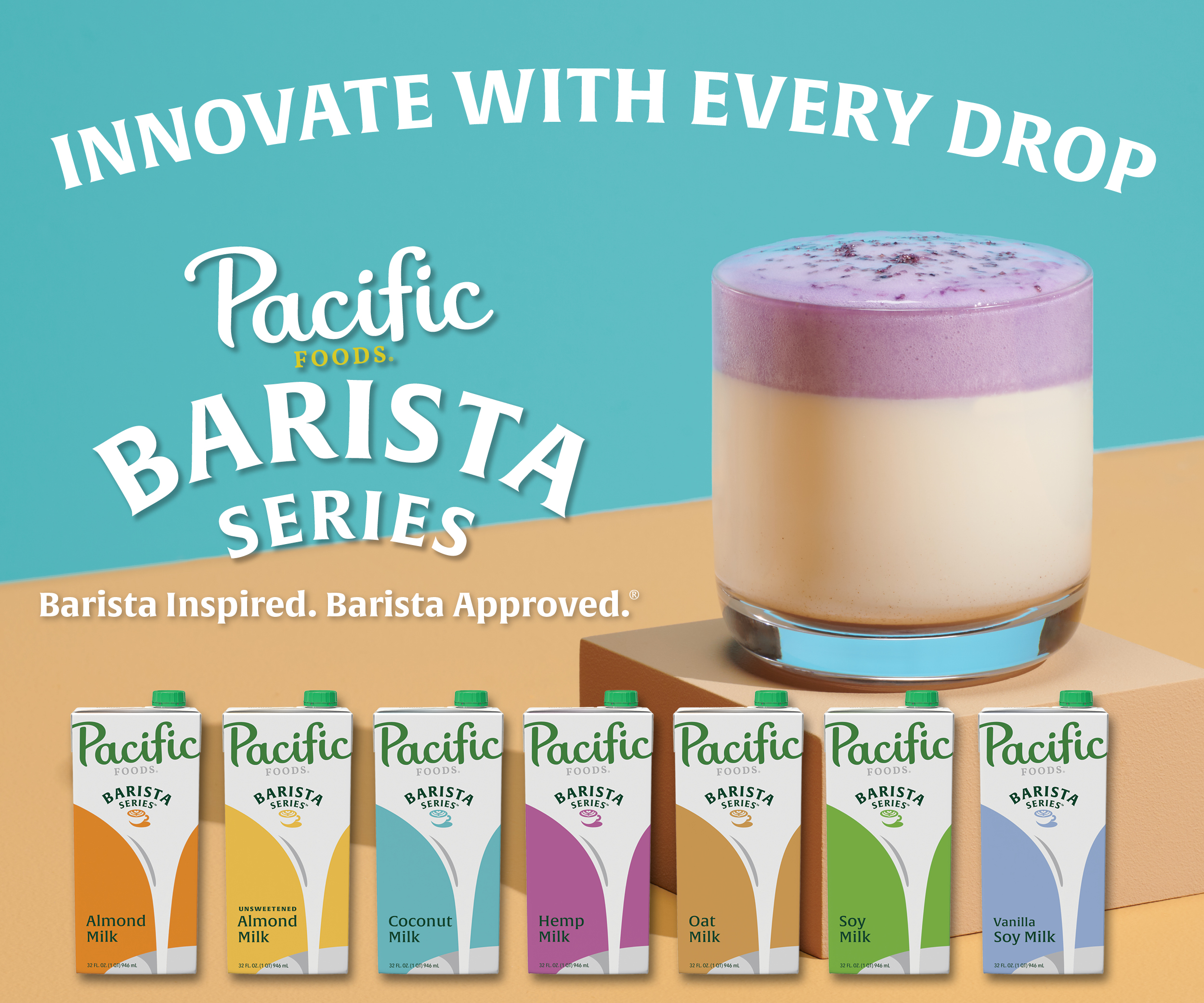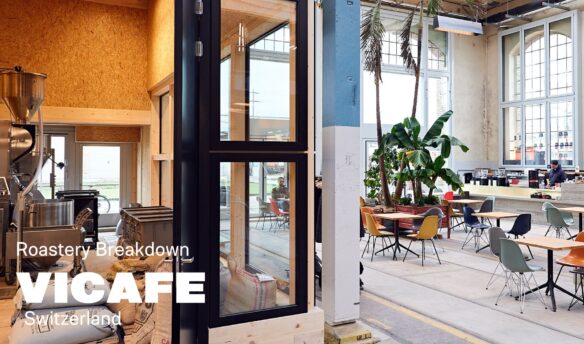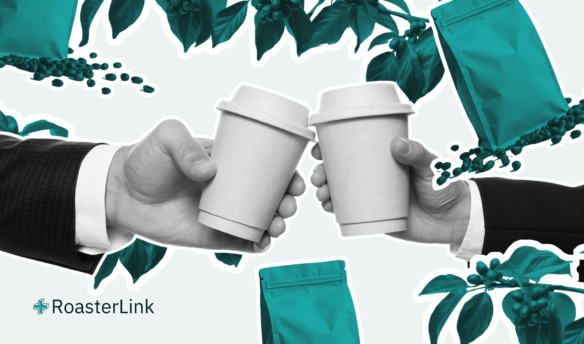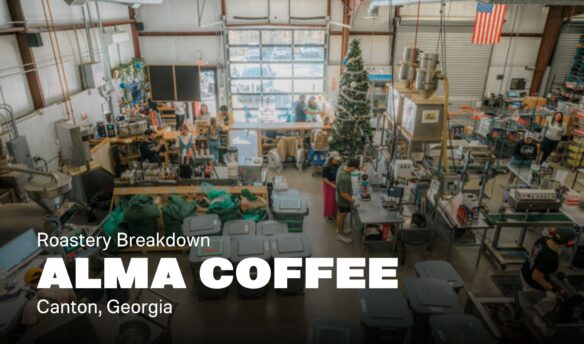[D]eath before decaf.” Whether screen-printed on a t-shirt or tattooed on a barista’s body, it’s a mantra all too familiar in the specialty coffee community.
But why is it that decaffeinated coffee is so frequently maligned by self-professed coffee connoisseurs? After all, decaf drinkers might be considered the true coffee lovers.
“Your customers who are buying coffee for the taste of coffee, not the caffeine, wouldn’t they want some variety and some interesting taste?” says Ruth Ann Church, president of Artisan Coffee Imports in Ann Arbor, Michigan, and former lecturer on decaffeination for the SCAA’s educational Pathways classes. For Church, the problem with decaf lies not with the decaffeination process, but the coffee that is normally used to make decaf.
“The supply chain does match the interest of specialty coffee,” she says. “The mentality of the older coffee industry is if you have past crop or damaged beans, just send them to be decaf.”
A growing number of importers and roasters are out to prove that decaffeinated coffee can be better than passable. In fact, it can be delicious. “Specialty roasters are not okay with plain old decaf,” Church says.
PROCESS MAKES PERFECT
One of those companies disrupting the decaf industry is Swiss Water Decaf, a Canadian company that purchases green coffee from origin and decaffeinates it with a patented non-chemical process. “If you’re buying good coffee, you can make really good-tasting decaf,” says Mike Strumpf, Swiss Water’s director of coffee.
“We look to it as a similar way as a roaster would buy green coffee,” Strumpf says. Whether the coffee is from Brazil, Colombia, or Ethiopia, Strumpf primarily looks for high-quality coffee with a certain flavor profile.
“Our process will make decaf that tastes like that coffee beforehand,” he says. To prove the point, Swiss Water offers roasters a chance to receive samples of lots before and after decaffeination. “It’s a fun thing for people to taste. You can see that the process doesn’t have a big effect on the coffee,” he says.
COMMITTED TO QUALITY
A commitment to high-quality decaf also inspired Cafe Imports’ Origin Select Premium-Quality Decaffeinated Green Coffee program. “Decaf drinkers like good coffee too,” says Andrew Miller, founder of Cafe Imports.
Rather than importing coffee that has already been decaffeinated, Cafe Imports selects coffee from their producer partners and decaffeinates it in country. “That means we can buy more coffee from our farmer partners in Colombia,” Miller says. “If we’re doing decaf too, we can do more of it and pay better money to producers.”
In Miller’s experience, most coffees drop one to two cup points in the decaffeination process. “Junk in gets you junk out. It’s certainly not going to improve,” Miller says.
So far, Cafe Imports is happy with the results.
“People keep asking us for the certification of decaffeination because they don’t believe they’re decaffeinated. They’re just so good,” Miller says.
GREAT DECAF STARTS AT ORIGIN
Strumpf is seeing a shift in focus from caffeine content to the producers.
“The new trend that is coming up is focusing on the quality of the coffee, but also the traceability of the coffee. It’s important to be able to find out where your coffee is coming from, so that you can tell the story,” Strumpf says.
Although most decaf is made from large lots, often including hundreds of farms across large geographic areas, Swiss Water is able to decaffeinate microlots as small as 50 bags, allowing for unprecedented levels of traceability for decaf.
TRACEABILITY ON DEMAND
Traceability and cup quality are two factors that led Mark Barany, founder of Seattle, Washington-based wholesale roaster Kuma Coffee, to partner with Swiss Water Decaf. “Any information on the coffee, when it was processed, we can get that information on demand,” Barany says.
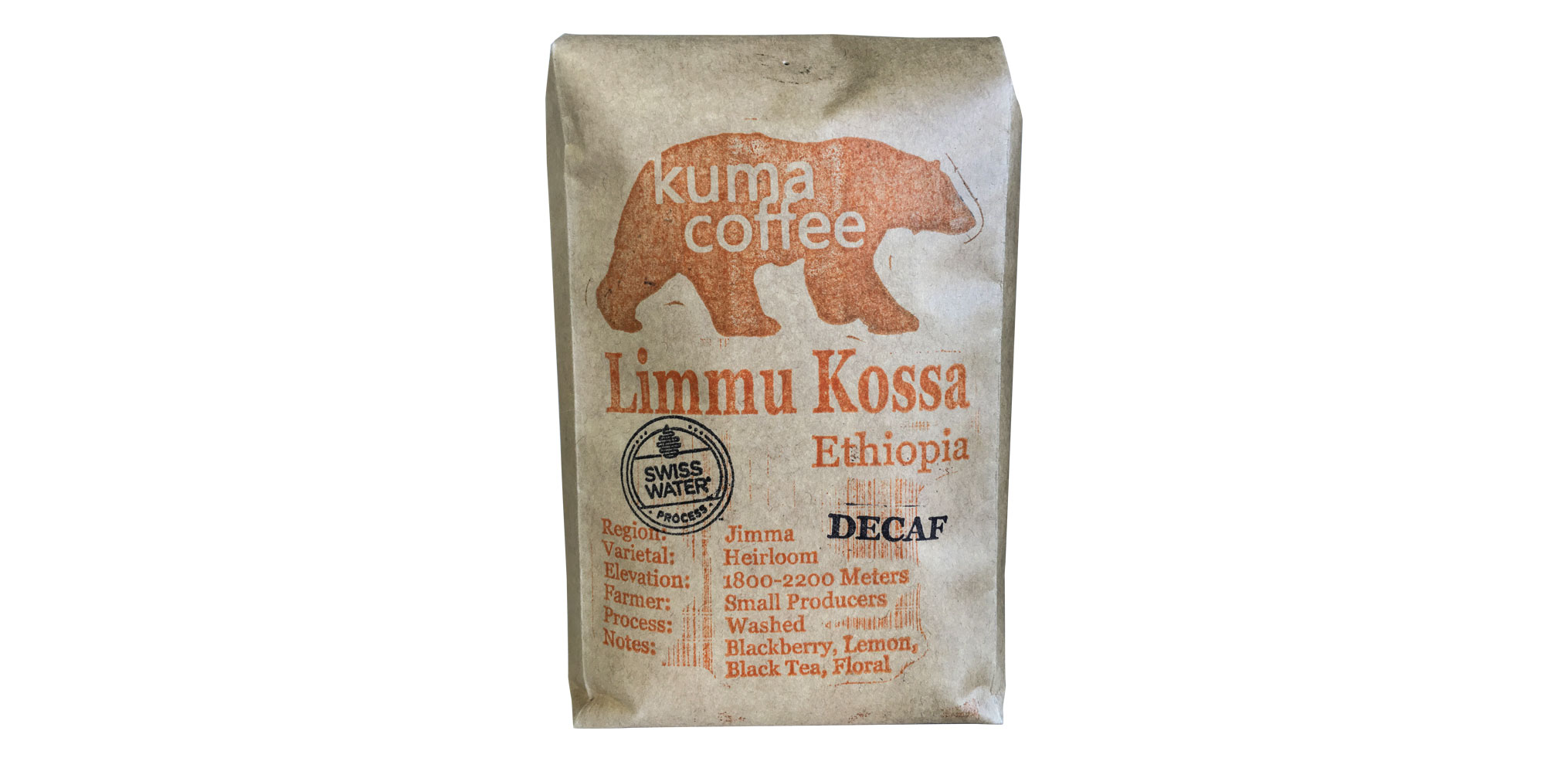
The experience also made him realize that there are other consumers like his wife who actually need a decaf option. “All of a sudden you go, ‘If we needed this option for nearly two years, there’s got to be people wishing for the same thing.’ ”
Barany also likes that Swiss Water Decaf uses a non-chemical process. Of the four major ways coffee is decaffeinated, only water process decaf can be certified organic. “We want our consumers to have trust in what they’re buying,” he says.
Although Cafe Imports includes Mountain Water decaffeinated coffees out of Mexico in their Origin Select decaf program, their Colombian coffees are decaffeinated with ethyl acetate, a naturally occurring ester of acetic acid. Ethyl acetate is a byproduct of molasses production, which makes it readily available in Colombia.
“I was pretty impressed they were using the local sugarcane to make the solvent,” Miller says. For Miller, the process is less important than the quality of the green coffee. “They all use a similar process,” he says. “I can’t say one is better than another.”
DEALING WITH DECAF IN THE CAFÉ
For roasters and cafés interested in improving their decaffeinated offerings, Barany cautions that decaf needs a different sourcing strategy than regular coffee. “Very few roasters understand how damaged the decaf becomes. You’re really working against time,” Barany says.
The process of decaffeinating coffee destroys the cell structure of the coffee. “The process literally is sucking the solubles out, removing the caffeine, and putting the solubles back in,” Baranay explains.
To compensate, Kuma only keeps a given decaf in stock for three months, rather than the six months to a year a well-processed regular coffee can stay fresh.
“Our goal is to do everything in our power to preserve the coffee. We’re really working against time,” Barany says.
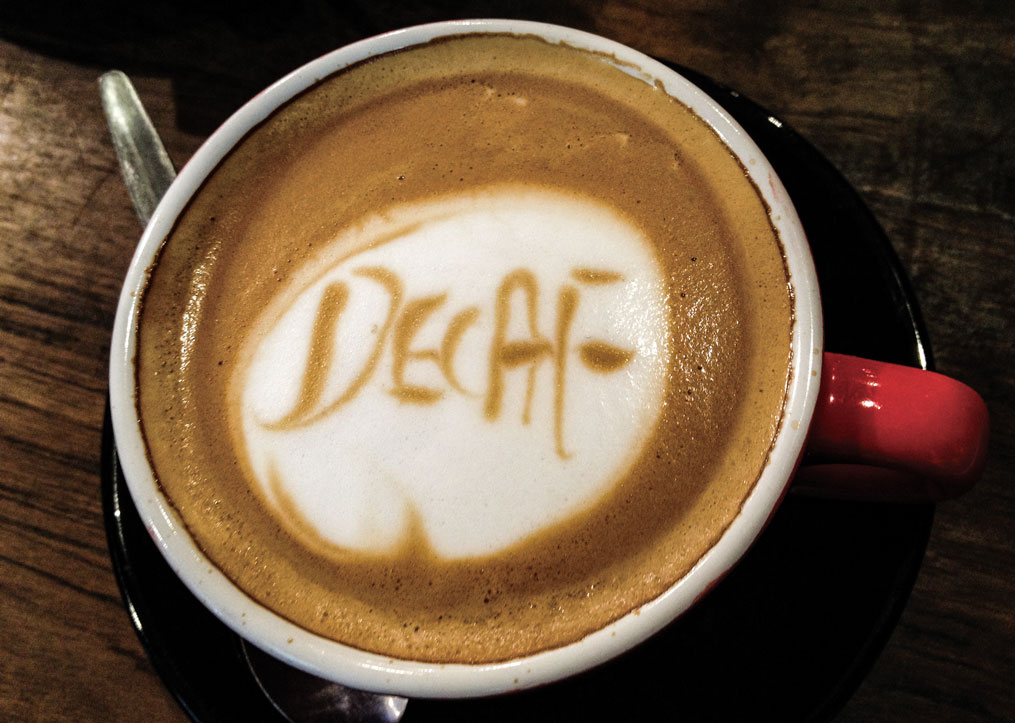
Despite these differences, decaf advocates encourage cafés and roasters to give decaffeinated coffee a chance and devote the same care and attention as their other coffees.
“Treat your decaf like regular coffee,” Strumpf says.











